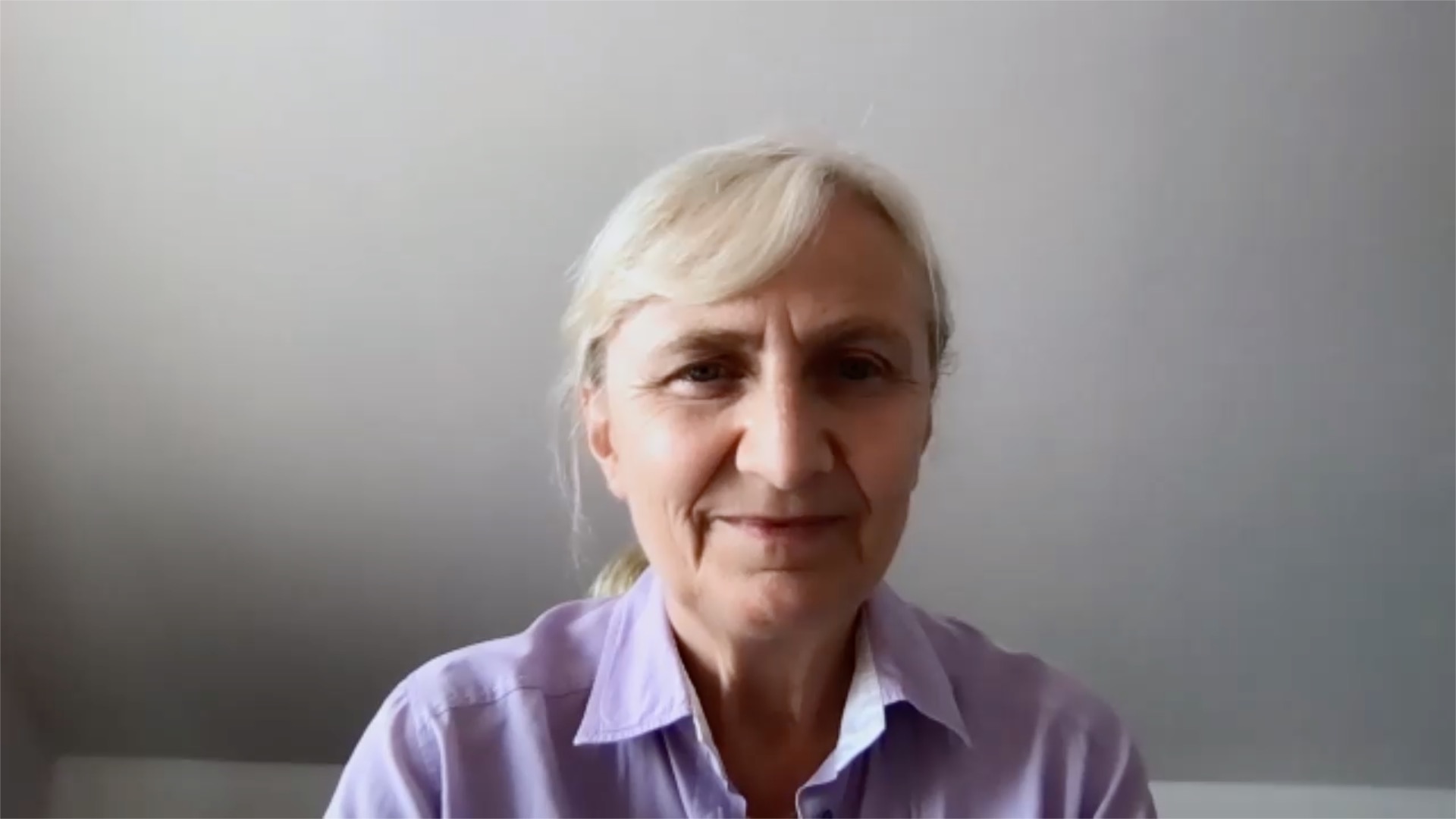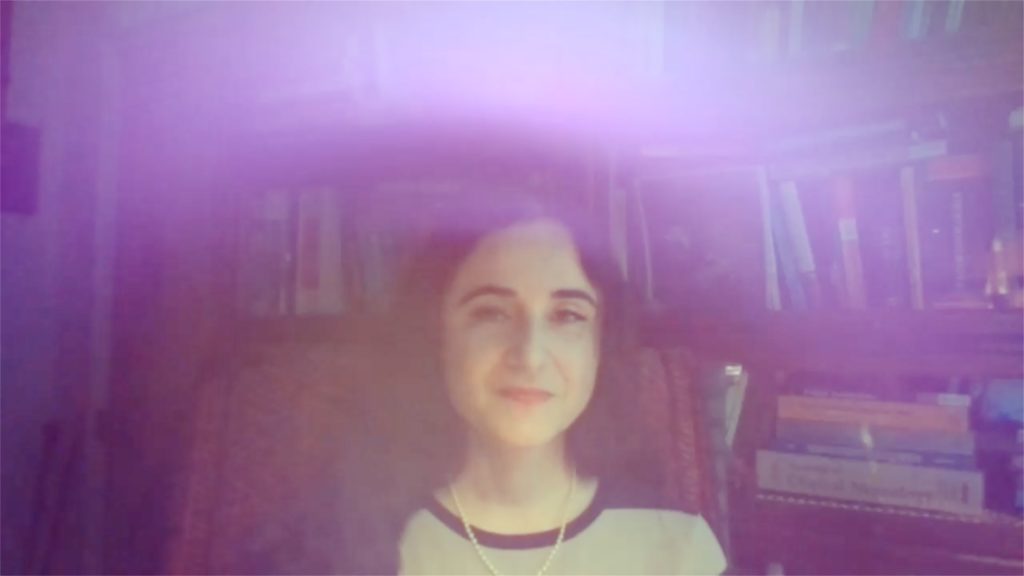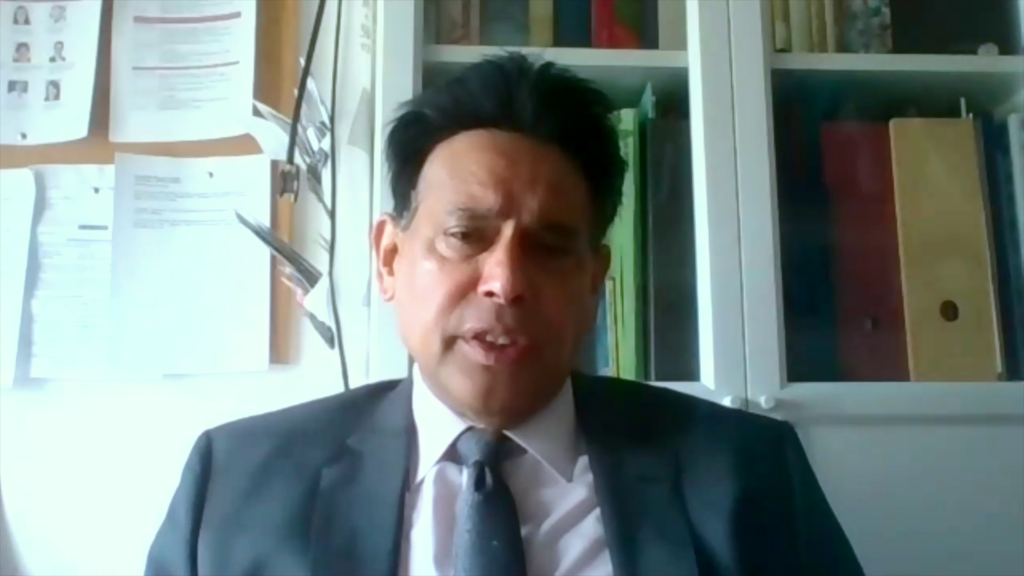touchNEUROLOGY coverage of data presented at EAN 2024:
As the Director of the King’s Parkinson’s Centre of Excellence at King’s College Hospital London, and a leading expert in Parkinson’s and movement disorders, Prof. K. Ray Chaudhuri brings his wealth of knowledge and insights from the 10th Congress of the European Academy of Neurology meeting in Helsinki to touchNEUROLOGY.
In this interview, Prof. Chaudhuri discusses key topics and personal highlights from the congress, including ground-breaking advancements in Parkinson’s treatment. He covers promising new therapies, personalized care approaches and significant research on the staging of Parkinson’s. Prof. Chaudhuri also emphasizes the importance of holistic treatment, stepped-care strategies, remote management and the potential of wearable technology in improving patient outcomes.
We conclude with an exploration of unmet needs in the field and predictions for future advancements. Prof. Chaudhuri shares his vision for the future of Parkinson’s treatment and the ongoing efforts to address current challenges in the management of movement disorders.
Questions
- What were your highlights from EAN 2024 around movement disorders? (0:25)
- Given the outcomes of EAN 2024 around movement disorders, what do you think the focus should be for EAN for the coming year? (6:11)
- What do you believe are the unmet medical needs around movement disorders, and what research are you most looking forward to in the near future? (8:06)
- Is there anything else you would like to add around EAN 2024? (11:18)
Disclosures: Prof. K Ray Chaudhuri has no financial or non-financial relationships or activities to declare in relation to this article.
This content has been developed independently by Touch Medical Media for touchNEUROLOGY. It is not affiliated with the European Academy of Neurology (EAN). Unapproved products or unapproved uses of approved products may be discussed by the faculty; these situations may reflect the approval status in one or more jurisdictions. No endorsement of unapproved products or unapproved uses is either made or implied by mention of these products or uses by Touch Medical Media or any sponsor. Views expressed are the speaker’s own and do not necessarily reflect the views of Touch Medical Media.
Transcript:
I’m Prof. K. Ray Chaudhuri, otherwise known as Ray Chaudhuri. I’m a Professor and Director of the King’s Parkinson’s Centre of Excellence at King’s College Hospital in London and also King’s College in London. And I have also several committee positions within the Movement Disorders Society and as well lead the Parkinson’s Disease Non-Motor Group.
Q. What were your highlights from EAN 2024 around movement disorders?
So I was very pleased to attend the European Academy of Neurology meeting in the beautiful city of Helsinki in June and July this year. And, I have a particular interest in the non-movement and non-motor aspects of Parkinson’s.
So I was especially involved in an advanced therapy session, chairing the session where we looked at the very exciting development of new drugs just coming for the first time in the history of management of Parkinson’s, which is subcutaneous delivery of levodopa. In this situation, subcutaneous delivery of foslevodopa–foscarbidopa, which is now licensed in many countries across Europe and other parts of the world. And the drug has incredible promise in delivering levodopa, from its prodrug, using a very, state of the art short small pump subcutaneously for the first time, to provide really true 24 hour cover for the management of Parkinson’s. So this has an enormous impact on people with Parkinson’s who have lots of night-time problems, often difficulty turning in bed at night, early morning ‘off’, along with day-time fluctuations.
All of those seem to be helped. And I’m very, very, pleased to see this development, which has taken over 10 years, finally make the transition from the bench, to the bedside, for the benefit of our patients globally.
So that was probably one of the biggest highlights for me, but there are also new treatments for Parkinson’s on the horizon. For instance, levodopa, carbidopa, and entacapone intestinal gel, which will be given through an infusion tube similar to the way we use levodopa-carbidopa, infusion or Duodopa. That’s also now available in several countries and can be very effective in some patients. So we look forward to the efficacy of that drug and its results through registry studies.
In addition, there were some generic, new movement disorders updates. For instance, the presentation on the staging of Parkinson’s. We were one of the first groups to describe Parkinson as a syndrome and not as a disease way back in 2017. And it’s nice to see that the Movement Disorder Society and many other learning societies are taking that concept up and are now developing new staging, biological, and clinical Parkinson, which might affect the way we treat Parkinson, in future. Again, personalized therapy for Parkinson’s, one other area that we have written extensively on.
There are some new genetic developments. For instance, we heard about the new gene, PSMF1, which, can cause early mutation in Parkinson and also greater awareness of the impact of early-onset Parkinson’s, particularly in some countries such as in India, parts of South America where the prevalence of early-onset Parkinson’s is likely to be quite high in future, an early-onset Parkinson, which is usually described as Parkinson’s between the ages of 20 years of age to 50, will have very differential impact and in terms of societal costs, lifestyle, and so on. So it was good to hear about that. There was also a presentation on tremor, and it’s interesting to hear about that in essential and dystonic tremor that there is often a small amount of time gap before the actual, tremor becomes clinically manifest. And that time gap is often triggered through stress or huge release of adrenaline, etc. And it just opens up an interesting avenue of treatment. If we have we, predict go into that predictive period. And this is work done by my colleague and friend, Bas Bloem, who presented that data. And then also, there is, there were some discussions on another new quite exciting development of focused ultrasound and invasive brainstem neuromodulation, particularly for people with tremor in essential tremor, but also in tremorous Parkinson.
So I think there were these major developments. And I think from a poster standpoint, once again, I think for me, even though there is an element of bias, one of the biggest things that stood out was work that’s developed in conjunction with patients. So it’s patient voice, a clinically enabled concept, and that’s the dashboard for Parkinson and also the stepped care paradigm for Parkinson. These are ways where you bring in medical treatment for Parkinson, but also lifestyle. You know, things such as one, 15 fifty minutes of exercise a week, two litres of water a day, five to six hours sleep, probably avoiding dairy (eating/drinking) after levodopa for about 40 minutes, getting Helicobacter pylori treated, making sure bone is healthy by doing a relevant DEXA bone scan, making sure that you’re not taking anticholinergic drugs, which are index over 3 etc., as important in managing Parkinson as is giving dopaminergic treatment. And there were quite a lot of work presented on the dashboard and stepped care also at EAN, and that for me was a big highlight. And there was, of course, presentations by several pharmaceutical companies bringing in their new therapies, which I’ve already alluded to. So I think all of that was a big highlight from the movement disorders point of view.
Q. Given the outcomes of EAN 2024 around movement disorders, what do you think the focus should be for EAN for the coming year?
I think in the coming year, the focus of year end in terms of movement disorders must be treatment.
Treatment is what matters to us, what matters to the patients. So all treatment developments, particularly with Parkinson’s, the fastest growing neurodegenerative disorder in the world. And with the number set to double with huge impacts on developing countries. So the focus should be on how best to manage Parkinson in early stages, in advanced stages. Have we made any advancements in neuroprotection or even, modulating the course of Parkinson, the importance of the role of alternative therapies, dance therapy, probiotics, as well as the dashboard-based, stepped care based regime for Parkinson and the development of advanced therapies. We’ve already heard foslevodopa–foscarbidopa, it’s already in the market. Lecigon is already in the market. But there might be other forms of subcutaneous levodopa. There might be other developments in focused ultrasound or even targeting with deep-learning stimulation. So all of this, I would really want to hear more about in the next year. But in addition to Parkinson, there are other areas such as areas of dystonia, such as areas of other inherited genetic disorders, the rare genetic disorders, and also restless leg syndrome, a hugely neglected, but very common movement disorder or a sleep disorder, some would call it. A little bit more on where we are with this really distressful problem for some people. So I think these would be the key things I would like to see brought together for Parkinson’s in the form of a dashboard of stepped care in the form of other disorders as the more recent developments.
Q. What do you believe are the unmet medical needs around movement disorders, and what research are you most looking forward to in the near future?
Well, movement disorders is a huge area, isn’t it? It sort of spans hypokinetic and hypokinetic disorders. So it depends on what type of movement disorders we’re looking for. If we look at purely from a global, societal, and health inequality point of view, I think the burning need is to get better management of our Parkinson’s disease or what I like to call Parkinson’s syndrome. This is because there’s huge inequalities and disparities in care still. Lots of the medication that is available to the affluent western world or parts of affluent eastern Asia is not available in the majority of other parts of the world, and the population that would get Parkinson’s is high in this part of the world. So what can we do about that? So that should be a big area to focus on. But also bringing in comprehensive holistic therapy using the dashboard, using stepped care is really very important. We must get away from this old fashioned view that a Parkinson’s patient is just treated with regular dopaminergic drugs, and the patient should come back again after a few months and you alter the dopaminergic drug. Surely, it’s important. But, also, another area I think we should look at is remote management. Some of my colleagues don’t like that idea. But I think in a new modern world, we need to think about it. We need to think about our patients, how difficult it is for some of them to travel. So in that situation, if we can provide app-based therapy, whatever possible, as is already happening in some countries, where patients can record their own symptoms in an app and send it to you through a cloud, and the doctor can provide remote management where possible, avoiding months and months of waiting, or, using wearable sensors, where also we’ve done quite a bit of work showing that there are perfectly valid wearable sensors now available, which gives you a granular look at the patient’s motor state and night-time state when they’re at home, and, again, over a seven day period. We do this for diabetes. We do this for high blood pressure. We do this for autonomic dysfunction. We do it for many other conditions, epilepsy even. And it’s time that remote monitoring and perhaps wearable sensor use was firmly incorporated in the pathway of care of Parkinson.
In terms of other movement disorders, I think the key unmet need really remains that of the genetic aspects of certain rare genetic disorders.
Again, coming back to Parkinson, of course, another massive, massive unmet need is neuroprotection. So anything we have, we are awaiting the data from the exenatide trial. We’ll see how that shows. We’re also awaiting data from a very novel brainstem neuromodulation using ear-worn headphones. We’ll have to see what that data shows next year. So these are all very important things that we look forward to hearing apart from the advances in the fields of dystonia, other rare genetic disorders, Huntington’s disease and also restless leg syndrome.
Q. Is there anything else you would like to add around EAN 2024?
So I would also like to add my personal congratulation to my long time colleague and friend, Prof. Elena Moro, for, being elected the president of the EAN, and also, of course, Prof. Irena Rektorova also another long time friend and colleague who is running the scientific program and other aspects of EAN, so well. So I really congratulate both of them, for this wonderful opportunity for academic and clinical interaction.
Interviewer/Editor: Helen Bowden
Cite: Chaudhuri KR. Movement disorders at EAN 2024: Highlights and beyond. touchNEUROLOGY. August 9 2024.




